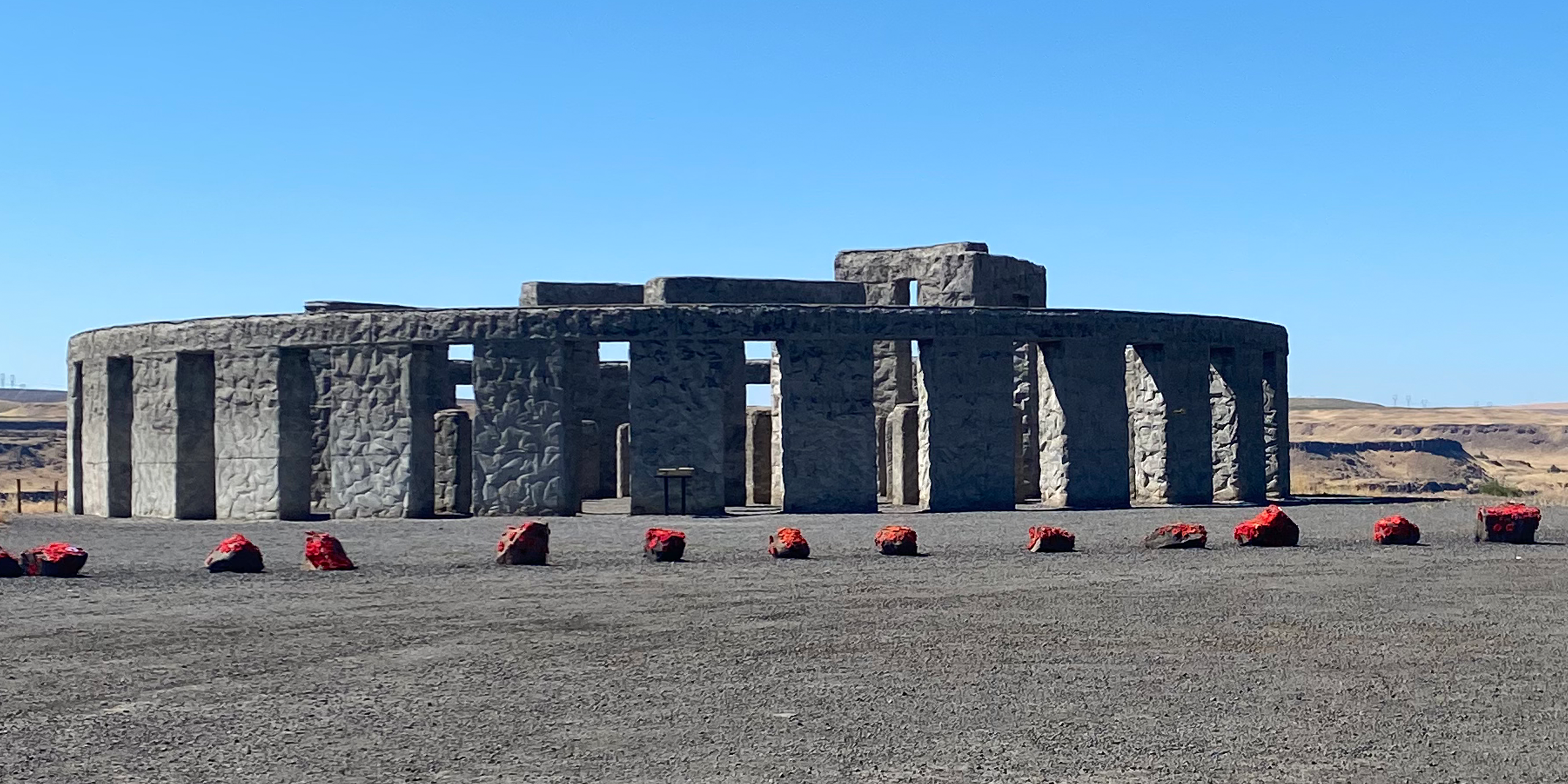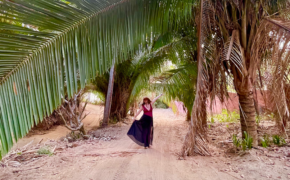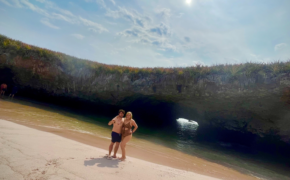Another Stonehenge
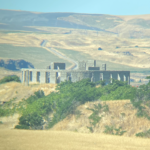
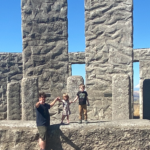
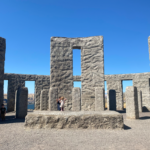
The structure before you is the first monument in our nation to military personnel who gave their lives in WW1. 13 young Klickitat County men, it serves as a lasting reminder of the works of Samuel Hill, patron of the region. He established a townsite here, with postoffice, hotel, general store, nearly 10 miles of experimental paved roads, the Maryhill Museum three miles to the west – all on his own land. His tomb is 50 yards distant, on the opposite side of this monument.
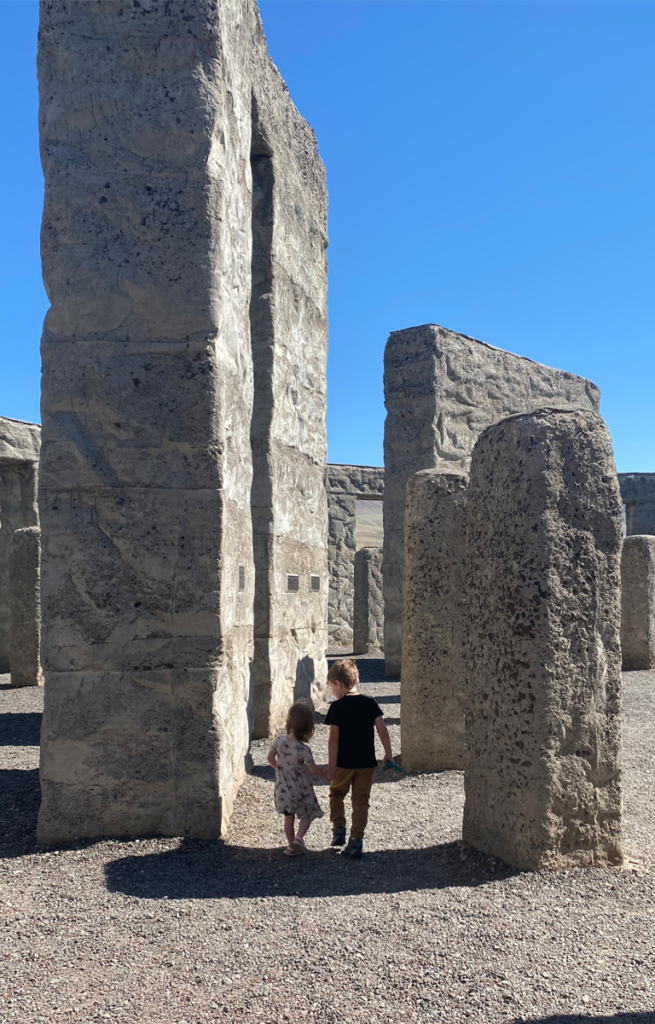
The design duplicates in size and original form England’s famous Stonehenge (dated 1900-1350 BC) on Salisbury Plain in Wiltshire. When Hill, a Quaker pacifist, visited England during the 1914-18 conflict, saw Stonehenge and was told it had been used for human sacrifices to pagan gods he remarked: “After all our civilization, the flower of humanity still is beingsacraficed to the god of war on fields of battle.” From that inspiration came this monument, built by Hill. On July 4, 1918 the alter was dedicated. The full structure was completed and dedicated May 30, 1929.

Today the sacrifice legend is generally discredited. Current belief is that Stonehenge was a device used by stone-age astronomers to measure time and mark seasons of the year by observing positions of the sun and moon.
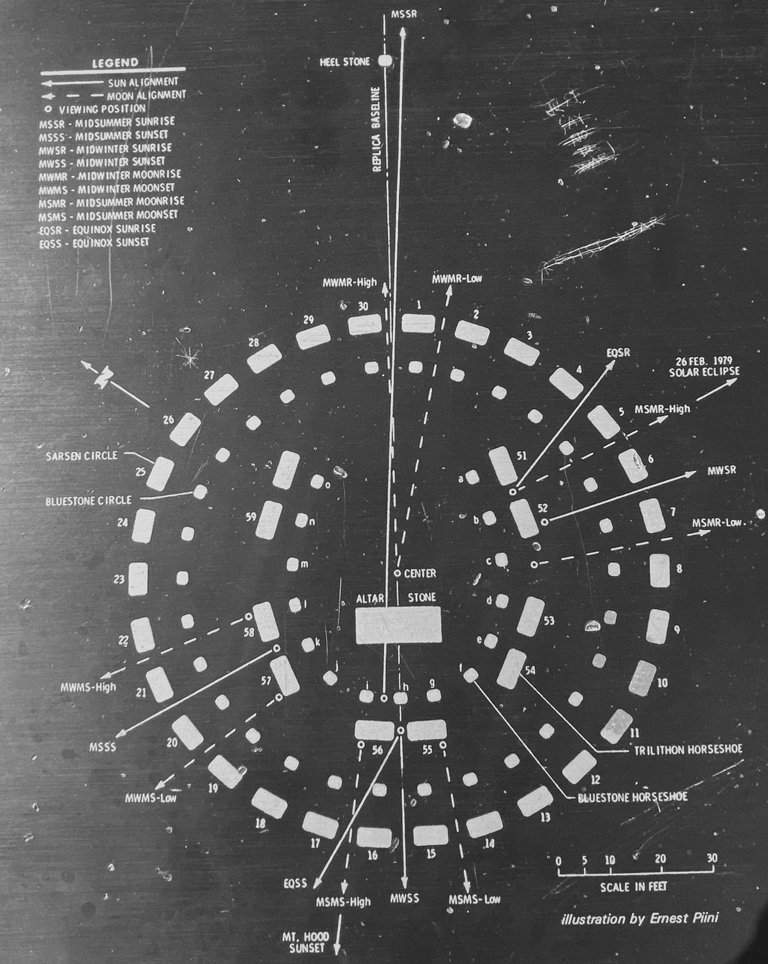
The diagram at left suggests how the original may have been used by its ingenious builders.

